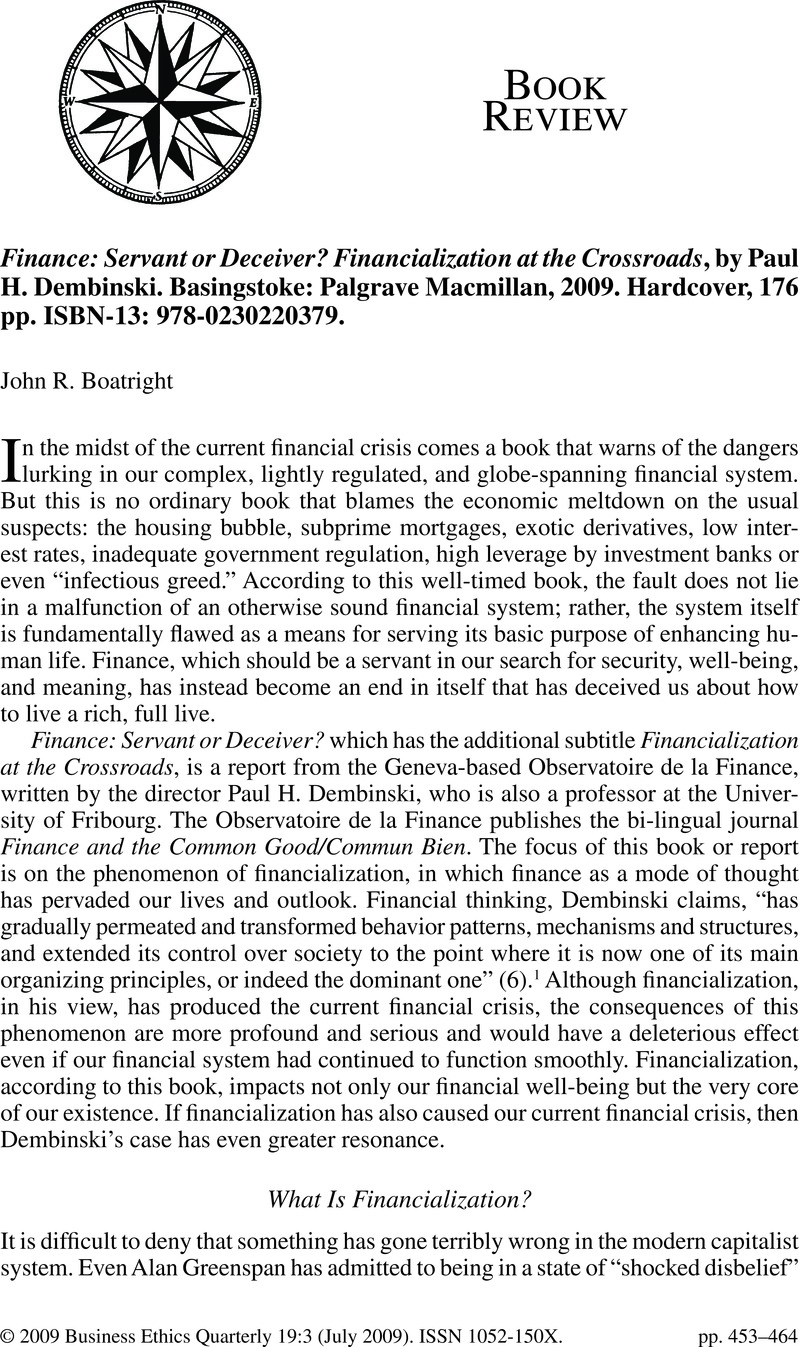Article contents
Finance: Servant or Deceiver? Financialization at the Crossroads, by Paul H. Dembinski Basingstoke: Palgrave Macmillan, 2009. Hardcover, 176 pp. ISBN-13: 978-0230220379.
Published online by Cambridge University Press: 23 January 2015
Abstract

- Type
- Book Review
- Information
- Copyright
- Copyright © Society for Business Ethics 2009
References
Notes
1. Pages numbers in the text refer to Dembinski, Paul H., Finance: Servant or Deceiver: Financialization at the Crossroads (Basingstoke: Palgrave Macmillan, 2009).CrossRefGoogle Scholar
2. Epstein, Gerald A., Financialization and the World Economy (Cheltenham: Edward Elgar, 2005), 3.Google Scholar
3. Greta Kippner identifies these two measures as activity-centered and accumulation-centered, in which the former measures employment and output, while the latter measures the generation of profits. Kippner, Greta R., “The Financialization of the American Economy,” Socio-Economic Review 3 (2005): 173–208.CrossRefGoogle Scholar
4. Palley, Thomas I., “Financialization: What It Is and Why It Matters,” Political Economy Research Institute Working Paper Series, Number 153, November 2007.Google Scholar
5. Jensen, Michael C., “The Modern Industrial Revolution, Exit, and the Failure of Internal Control Systems,” Journal of Finance 48 (1993): 831–80.CrossRefGoogle Scholar
6. Simmel, Georg, The Philosophy of Money (New York: Routledge, 1990), first published 1900.Google Scholar
7. Coser, Lewis A., Masters of Sociological Thought: Ideas in Historical and Social Context, 2nd ed. (New York: Harcourt Brace Jovanovich, 1977), 194.Google Scholar
8. Bernstein, Peter L., Against the Gods: The Remarkable Story of Risk (New York: John Wiley, 1996), 1.Google Scholar
9. See Palley, “Financialization,” 21–23.
- 2
- Cited by


